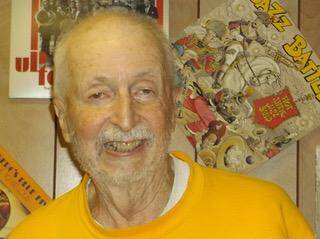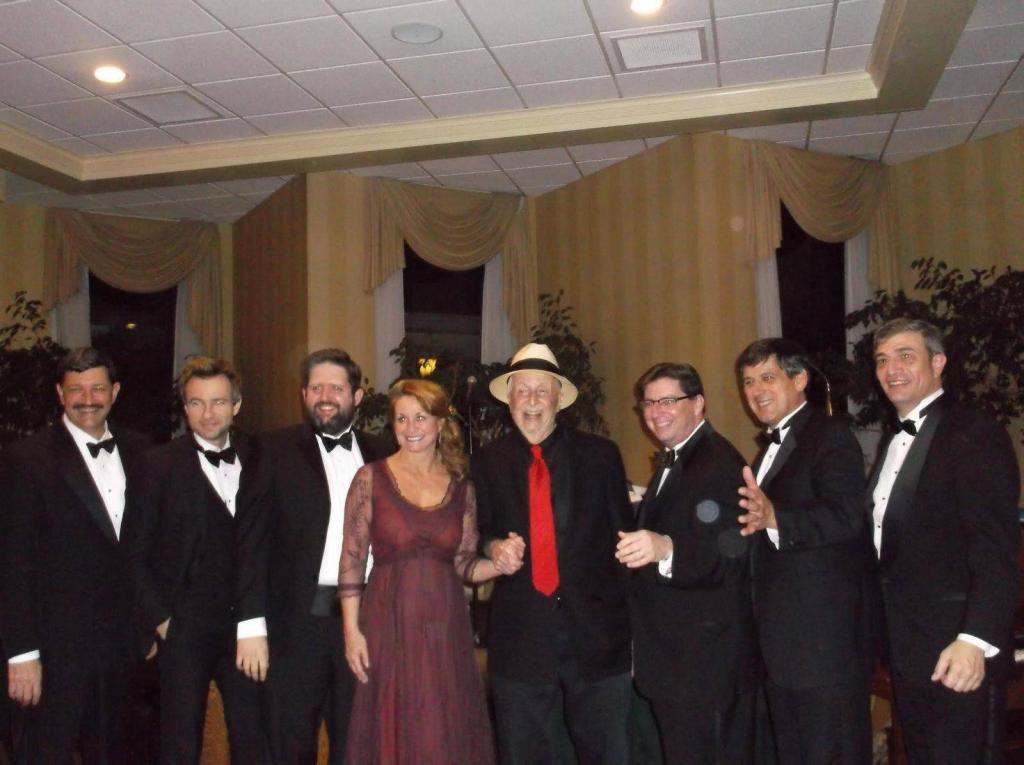
I didn’t have far to travel to write this installment—25 miles to my hometown of York, PA—to interview my friend Bob Erdos. Bob, as many readers know, is the founder, producer, and owner of Stomp Off Records. Since 1980, Stomp Off has released over 400 LPs, cassettes and CDs of repertory bands in the US and abroad—a total of nearly 200 bands, and over 3800 tunes. I made no attempt to count the number of individual musicians, but they undoubtedly reach close to 1,000.
With downloads replacing CDs, Stomp Off’s inventory is now also available in this format. But there will not be any more CDs other than reprints of existing titles that have sold out. Stomp Off has been a labor of love for 36 years for Bob, as became evident during our chat.
My connection to Bob dates from long before Stomp Off. My parents and grandparents knew him, his wife Erda, and his parents. We also have a distant family link. Bob had a first cousin, now deceased, who married one of my father’s second cousins.
Bill Hoffman: What were your reasons for starting Stomp Off?
Bob Erdos: had gone to several jazz festivals in Europe and thought that Americans should hear some of the bands there playing traditional American jazz, and conversely, I thought Europeans should know that trad jazz was still alive in America. I also thought there were so many great tunes that didn’t lend themselves to jam sessions that weren’t being played. In addition, there weren’t many reissues of the classic bands at that time. These reissues often had a higher fidelity than the original 78s.
At that time did you think the European bands or American bands were better?
BE: The US bands were playing mostly in the Lu Watters style while the European bands played mostly from the classic repertoire. Although I liked both styles, I thought the possibilities with the European bands were better; they dug deeper into the repertoire of the 1920s vintage bands.
When and how did you develop your interest in early jazz?
BE: I was exposed to my father’s classic record collection. I wanted to go in a different direction, so I started collecting LPs of a variety of styles from Teddy Wilson to Tad Dameron to swing bands. Then I stumbled across albums by Bunk Johnson and Kid Ory, and started in that vein.
The real tipping point came in 1950 when I went to England and went into a record store to ask where I could hear old-style jazz. I was sent to the 100 Oxford Club in London where Humphrey Lyttelton and his band were playing. It was so cohesive, so melodic. I also went across the Channel and heard the Dutch Swing College Band (not college students, but still young). After our kids got older, Erda and I started going to jazz festivals in the US and we became friendly with many musicians. We went to some in California, and to the St. Louis Ragtime Festival more than any of the others. I regret that I never went to more ragtime festivals. I never tried to hear every band at a festival; I would pick out six or seven and hear them multiple times.
What’s the most unusual album you’ve produced, and why?
BE: The two CDs of Dan Levinson’s Canary Cottage Orchestra with a vocal quartet recreating the Frisco Jazz Band. There’s no evidence that the Frisco band ever played with a male vocal quartet. It took a lot of effort by Dan, with help from Neal Siegal, who’s in the quartet on those two CDs, to find singers who could sing in harmony and not sound like barbershoppers.
What was the most difficult album to produce, and why?
BE: The Mojo Jazzin’ Five. They played in the style of Lovie Austin and thought it would be a disservice to re-create what she had done. In fact, we were trying to honor her style.
What is the extent of your involvement in the production of the records?
BE: I select the bands, of course, and I exert considerable influence on the tunes to be recorded, but I mostly defer to the band as to what will work for them. In the case of Paris Washboard, for example, they occasionally veer more into the Swing Era than I care for, but Louis Mazetier creates such wonderful arrangements that I was happy to include those titles. I also want to mention is that we prefer to record tunes that haven’t ever been recorded since the vintage recordings of the 1920s, or haven’t been over-recorded.

Stomp Off CDs are known for their extensive and well researched liner notes and beautiful covers. How did you find the people who do this work?
BE: I want good liner notes and good art to present the bands in the best possible way. Dick Baker did much of the research on the composers at the Library of Congress. The covers were originally designed by Joe Mathieu, a great caricaturist in the Boston area, near the Black Eagles whom I recorded numerous times. In later years we used Joe Busam, who in addition to being a great artist is very knowledgeable about jazz. When I’d give him an assignment, he’d ask what tunes were on the album. From that he’d come up with the appropriate art. Joe did over 100 covers for Stomp Off, and now does them for Bryan Wright at Rivermont.
What’s in the future for Stomp Off?
BE: We’re not planning to produce any more new CDs, but we will re-press CDs that are out of stock where there’s demand. We’re now doing down-streaming. With Dick Baker’s help, I’ve put about 80 CDs out for streaming. I’m happy this is happening when I see the countries throughout the world where people are buying downloads.
Anything else?
BE: The working relationships and friendships I have had with the musicians we have recorded are very rewarding for me. There’s been a benefit and a liability to producing this less known repertoire. The benefit is that bandleaders have told me that by freshening up the repertoire they’re going to record, they play the rest of their book better. The liability is that when people buy CDs they want to hear tunes they know. This probably hurt sales. For example, there’s only one recording of “When the Saints Go Marching In” on Stomp Off. Bands get tired of playing it, too.
In addition, repertory albums by bands assembled just for the recording are hard to sell because it’s not a recognized band, and yet these are the most difficult to produce because the musicians are brought in from all over. The reward is that long-forgotten tunes are preserved and now available in the highest fidelity.
And on that “note,” I have nothing to add but deepest thanks to Bob for the contribution he has made to the traditional jazz arena.
See: Bob Erdos, 86, Championed Traditional Jazz
Bill Hoffman is a travel writer, an avid jazz fan and a supporter of musicians keeping traditional jazz alive in performance. He is the concert booker for the Tri-State Jazz Society in greater Philadelphia. Bill lives in Lancaster, PA. He is the author of Going Dutch: A Visitors Guide to the Pennsylvania Dutch Country, Unique and Unusual Places in the Mid-Atlantic Region, and The New York Bicycle Touring Guide. Bill lives in Lancaster, PA.






















